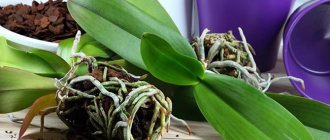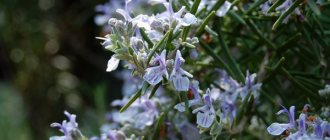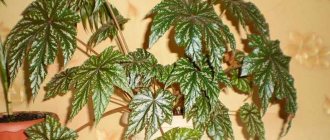In this article you will learn how to grow pineapple at home. At first glance, this seems like a complicated matter, but in reality everything is very simple.
Increasingly, on home windowsills you can find growing lemon, tangerine, mango, pineapple and many other exotic and not yet quite familiar to us fruits. It is quite possible to grow such a miracle at home; all you need is desire and patience. Today we will talk about growing one of the most popular fruits at home - pineapple.
How to choose the right planting material for growing pineapple?
It is important to immediately note that this plant can be grown not only with the help of its “tuft”; seeds and root cuttings of an adult plant are also used for these purposes. If you want to plant this exotic plant at home using its top, then first you will need to purchase a suitable pineapple.
A ripe and pleasantly smelling fruit would be suitable in this case :
- First, appreciate the aroma of pineapple. If you smell the fruit, but do not feel any odor, this indicates that it is not yet ripe and, accordingly, it will not be suitable for planting. The ripe fruit has a fairly pronounced and very pleasant smell.
- Now look at the fruit. It must be intact, not deformed or rotten . The fact that the fruit has begun to rot will be indicated by dark spots on it and between its scales. Also evaluate the color of the pineapple, it should be uniform. Most often, a ripe fruit has a yellowish color; if the fruit is green, this indicates its immaturity.
The pineapple should be ripe and aromatic
- For planting, you need a moderately ripe pineapple ; an overripe fruit is definitely not suitable. To determine if it is suitable for planting, press it lightly. If the fruit is overripe, it will be very soft, you can literally pierce it with your finger, while green pineapple, on the contrary, will be hard. If, when you press on the scales of the fruit, they seem to spring back, then this means that the fruit is moderately ripe.
- It is also very important to examine the very top of the fruit . It should be green and its edges a little dry. If the leaves are yellow or rotten, then this fruit cannot be taken.
- Another sign of a suitable fruit is a hollow sound when you tap it.
As for pineapple seeds, you need to buy them based on the following tips:
- If you are careful, you will notice that the pineapples sold in our stores, as a rule, do not have seeds. The thing is that such pineapples are bred and not wild. Sometimes pineapple contains such seeds, but more often than not they are unsuitable for further manipulation.
- That is why it is recommended to buy seeds in special stores to grow this exotic miracle.
- The seeds must not be dry or damaged; you also need to pay attention to their size - they should not be too small.
Growing from seeds
Regarding root cuttings , you can take cuttings from a plant during fruiting or after this process. It is important that the shoots to be separated are of sufficient size, approximately 15-20 cm. In this case, the plant from which the cuttings will be taken must be absolutely healthy and strong.
Description of pineapple
Pineapple is a perennial; during the growing season it forms dense, fleshy leaves collected in a rosette. Its leaves are succulents; they are able to accumulate moisture in the tissues. From 30 to 100 cm long. A dense, massive stem grows from the basal rosette. A peduncle is formed at the apex, up to 50 cm long. The flowers are spike-shaped; when ripe, a rosette with bracts appears at the apex. The flowering period of an adult plant aged 3-4 years occurs from May to July. The fruits weigh up to 5 kg, are juicy, sweet and sour, similar to a large golden conifer cone with a bunch of short leaves at the top. The root system is weak, buried 30 cm.
How to grow a pineapple from the top at home: preparation
It should be noted that most often this exotic fruit is grown in this way, since it is the fastest and easiest.
The success of such cultivation directly depends on the quality of the planting material and how correctly it is prepared for planting. So, first, choose a pineapple based on the above recommendations. Next, you need to separate the “tuft” from the fruit itself. You can do this in several ways:
- Take all the pineapple leaves in your hand and squeeze them quite tightly. Next, carefully turn the greens. If the pineapple was chosen correctly, the top will turn and separate from the main part of the fruit. In this case, a little stem should remain at the bottom of the top.
- If it is not possible to separate the planting material in this way, use a knife. Carefully cut off the top of the fruit along with the top. Next, use a knife to separate the entire edible part from the top. Be careful, if even a little fruit remains along with the “tuft”, this will lead to its rotting.
- When you, using one of the methods, separate the planting material from the fruit, also carefully remove a couple of lower leaves from the “tuft”.
Separate the top
- After this, hang the planting material in a dry place and leave it for a day. The top should dry out a little.
- After the specified time, take a container of water, preferably a glass, and place the top in it. Be careful, there should only be a bare trunk of the “crest” in the water.
Place in water
- Now you need to move the planting material along with the glass to a windowsill or table and wait for the roots to sprout. As a rule, this process takes about 1 month.
- The water in the container needs to be changed from time to time, and you also need to make sure that there is always enough of it.
- When the top takes root and they reach about 3 cm, the planting material will be ready for further manipulations, which you will learn more about below.
How to properly plant a pineapple from the top and care for it after planting?
So, after the planting material has been prepared, you can begin planting the plant itself. At this stage, it is necessary to pay attention to the soil in which we will plant the plant. Suitable for our purposes:
- Self-prepared soil, which can be obtained by mixing sand, peat and ordinary soil in equal proportions
- And also soil for cacti purchased in a special store.
- And one more thing, in addition to the earth, we will need expanded clay
As for the capacity, to begin with it will be enough to take a small pot, which will have a volume of about 1 liter.
- We take a container and pour expanded clay onto its bottom. Its layer should be large enough, since this material will serve as a drainage system.
- Next, fill the container with the selected soil.
- It is recommended to pre-moisten the soil, but do not make the pot completely muddy.
- Now make a hole in the ground; its depth should be such that the top trunk can easily fit into it.
- Carefully place the “tuft” in the hole, fill the hole with earth, and lightly tamp it down. It is permissible to sprinkle the lower leaves a little with soil, but the rest should not be immersed in the ground.
- Check that the top is firmly anchored in the ground and does not fall. Water the plant a little.
Growing Pineapple
- After carrying out all the above manipulations, it is necessary to “hide” the plant in a bag. In this way, the conditions necessary for its rooting will be created. Remove the bag from the pineapple regularly to ventilate it. You can completely remove the bag when the fruit has taken root.
- Now choose a permanent place for the planted fruit. The room in which the pineapple will grow must be warm, without drafts. At the same time, you cannot place the container with the plant in a place where it will be exposed to direct sunlight, near radiators, heaters, stoves, etc. Pineapple is contraindicated in cold, drafts, dry air and constant exposure to the sun.
- Also water your pineapple regularly , using only warm water. As for its quantity, it all depends on the requirements of the plant. As soon as the top soil becomes dry, water the fruit generously. Do not forget, it is important to moisten the soil not only on the surface of the pot, but also below.
- You can periodically feed the plant with fertilizers, this will also have a beneficial effect on its growth and development. You can buy them at any flower shop.
- Next, keep an eye on the plant; after about a couple of months you will see that the leaves of the “tuft” disappear, and new ones appear in their place. This is a good sign and will indicate that the plant has taken root and is actively growing. Carefully remove dry leaves so that they do not interfere with the growth of new ones.
- After about 1-1.5 years, transplant the plant into a larger container. This can be done at almost any time, with the exception of the flowering period. You need to replant a pineapple without shaking off the soil from its roots.
Beneficial and harmful properties of pineapple
A ripe pineapple contains a whole range of useful substances for our body, I’ll tell you more about the fruit.
- B vitamins are essential for the nervous system.
- Calcium strengthens teeth and bones.
- Iodine nourishes the endocrine system.
- Selenium prevents cancer.
- Vitamins A, E and potassium - thin the blood and improve skin condition.
- The rare element bromelain, which is part of fiber, burns fat deposits.
- Vitamins P, K and zinc with copper help improve metabolism and blood circulation.
- Pregnant women should use pineapple with caution, as it can cause muscle contraction and premature birth.
- I advise those who are breastfeeding to refrain from eating pineapple in the first half of the year, as it is an allergen.
- It is also better to limit consumption for children under 1.5 years of age.
- Pineapple increases acidity, so it is better not to eat it if you have gastrointestinal ulcers.
- Eating large quantities of pineapple pulp can damage your teeth.
Watch a video of how subtropical culture grows and develops at home.
How to grow pineapple at home from seeds?
This method of growing such exotics is considered the most difficult and requires certain skills in this matter, as well as great patience.
- Purchase plant seeds from a specialty store. As a rule, they do not require any additional processing.
- Prepare a container and fill it with soil made from soil, sand and peat (mix everything in equal proportions).
- Planting material is sown in the prepared soil to a depth of about 1.5 cm. It is not worth sowing the seeds deeper, they may simply not sprout.
- Now moisten the soil with warm water and wrap the container in film or use a plastic bag.
- Provide future plants with the necessary conditions. To do this, place the container with planting material in a warm place.
- After 2-6 weeks you will be pleased with the first small sprouts. How quickly you see seeding results depends on the temperature at which the seeds develop. The warmer the room, the faster the seeds will germinate.
You can grow pineapple from seeds
- Small sprouts also need care. Be sure to water them and also feed them with the necessary fertilizers and do not leave them in the scorching sun. Regularly remove the bag or film to ventilate the seedlings.
- When you see that the pineapple leaves have grown and reached a length of 5 cm, feel free to pick them. To do this, prepare the soil from soil, sand, peat, humus and charcoal, or buy a ready-made composition in a specialized store.
- Next, also monitor the temperature and humidity levels in the room. If necessary, fertilize the pineapple and replant it in a large container.
If you still decide to try to grow a plant from seeds that you find in a purchased fruit, then before planting, be sure to treat them with a weak solution of potassium permanganate, and then let them dry completely from the liquid.
How to grow pineapple using root cuttings?
This method is suitable for those who already have an adult plant at home. By transplanting cuttings you can please yourself with a large number of new exotic plants.
- The plant can be propagated in this way during its fruiting or after this process.
- Only those cuttings that have reached approximately 15 cm are considered suitable.
- To obtain planting material, you can use a knife to carefully cut off the shoot or simply tear it off with your hands. We described a similar process earlier when we talked about planting a pineapple from the top.
- The damaged area on an adult plant must be sprinkled with wood ash.
- Now carefully hang the planting material and let it dry for 2-3 days. It must be hung with the leaves facing down.
- Next, you can either germinate the roots of the cutting by placing it in a container with water, or leave it and let the “wounds” overgrow a little, then treat it with wood ash and plant it in the ground. Sometimes only the separated cuttings already have small roots, in this case there is no need to grow them further, you can immediately plant the plant in a pot.
Cuttings
- You need to plant pineapple in a mixture of soil, peat and sand or in ready-made soil, which can be bought at a specialty store.
- The container must have drainage, otherwise the water will stagnate in the pot and the plant will begin to rot.
- After planting, the cuttings need to be watered, covered with a bag and taken to the warmest room. Periodically, the bag needs to be removed and the plant needs to be sprayed or watered a little.
- A couple of months later, after the planted pineapple begins to grow new leaves, evaluate the condition of the plant. Start introducing fertilizing, do not cover it with the bag anymore.
- After 1-2 years, transplant the pineapple into a larger pot.
How to properly care for an adult pineapple at home?
Planting a plant is only half the battle. The most important point is proper care for an already mature pineapple, because without the necessary conditions, the plant will not bloom and certainly not be pleased with the harvest.
- Lighting . This plant loves light and needs enough of it. If in the warm season a pineapple can simply be placed on the windowsill and this light will be enough for it, then in winter you also need to use a special lamp that will help increase daylight hours.
- Temperature. This culture loves warmth very much and, in principle, does not tolerate cold. If the thermometer shows +17 °C, this means that your exotic miracle is already cold. The plant will feel good if it is in a room where the temperature does not drop below +20 °C. For the same reason, you should not place a container with pineapple on a cold windowsill or balcony, especially if it is no longer summer outside. It is important to say that pineapple, like any other plant, senses changes in weather conditions outside the window, so in winter it needs to organize a little rest. At this time, it can be moved to a room with a temperature of approximately +18°C, while watering should be slightly reduced, as well as daylight hours.
- Watering. Watering should not be done very often, but the amount of water should be sufficient to moisten the soil not only in the top layer, but also below. A sure sign that the plant needs to be watered is dry soil. The procedure must be carried out exclusively with warm water. In addition to watering, the plant is also sprayed with a spray bottle; such a “shower” should be carried out on hot days.
Homemade pineapple needs proper care
- Fertilizer. Caring for an exotic plant can be considered good only if regular feeding is carried out. Pineapple needs different fertilizers; a consultant at a flower shop will help you choose them. As a rule, fertilize the plant more than 2 times a month.
- Transfer. Pineapple needs replanting every year. At the same time, you need to know that the plant is being replanted without disturbing its roots, that is, there is no need to shake off the soil from them. The volume of the container needs to be increased quite a bit.
- A container in which a pineapple grows. Such a container can be completely different, the main thing is that it matches the size of the plant. It must also be said that the container must have drainage, otherwise the pineapple will die sooner or later, never delighting you with its flowering and fruits.
Growing and care
Pineapple is not capricious and unpretentious. It does not require special care, frequent watering and constant fertilization. However, there are a number of conditions that should not be neglected.
Air temperature
The optimal temperature for growing pineapple is 22–25°C. Pineapple loves warmth and light. In winter, maintain the required temperature using heating devices or lamps. If the plant lives on a windowsill, carefully protect it from drafts and frostbite.
Soil moisture
Remember that pineapple is naturally accustomed to a tropical climate, which means it can tolerate heat. He has to go without water for several months. Therefore, the main mistake you can make is to overdo it with abundant watering. Best advice: watch your plant, feel it. It is enough to water the pineapple a couple of times a week, and even less often in winter. If your plant needs more moisture, drying leaves will tell you so. Then you will need to water more often or abundantly. But excess moisture can lead to rotting and death.
Important! Remember a simple rule: you should water the pot only when the soil in it is completely dry.
Fertilizers
Pineapple does not need additional fertilizers. However, if you definitely want to feed your pet, you can do this with the help of organic or complex flower fertilizers. At the same time, avoid using alkaline substances that are harmful to pineapple.
Transfer
Promptly replant the growing pineapple into a new, larger pot. This should be done at least once a year. Try to gradually increase the volume of the pot, do not replant the plant in a container that is too large.
Home grown pineapple
Bloom
Pineapple blooms in the third year of life. At the same time, the apical rosette grows and root buds appear. A densely overgrown crown will give good fertility. At the end of flowering, you need to get rid of old and dry leaves. Now you have every chance to grow a real pineapple and enjoy the fruits of your labor. After the fruit is removed, the plant gradually dies. But even during the flowering period, you can separate the root buds from it and replant it in the ground. From them the plant will develop much faster than from the cut top.
How to make a pineapple bloom: special care
Unfortunately, pineapple flowering at home does not always occur. Often, a plant is helped to bloom by stimulating it with various methods for this process.
- Let's start with the fact that only an adult and healthy plant can bloom and, accordingly, bear fruit for 2-3 years.
- To speed up this process at least a little, impatient owners of exotic plants use special fertilizers.
One of the most popular top dressings is the following:
- Approximately 10 g of carbide should be added to 1 liter of clean water.
- After the reaction has occurred, you will see that a small sediment has appeared in the container - we don’t need it
- Therefore, pour about 25 ml of clean liquid into another container and pour it over the pineapple
- We pour the solution directly onto the leaves, trying to get into their middle, from where the flower and, accordingly, the fruit will then appear.
- This procedure must be done for 3 days in a row.
Pineapple blossom
To use another method, follow these instructions:
- The plant must be “hidden” in a bag, and a 0.5 liter container of water must be placed in the pot.
- Add 5 g of carbide to the water daily and quickly close the bag. The bag must be closed tightly so that the substance released during the reaction does not escape beyond its boundaries. The procedure must be carried out for a couple of days in a row
You can use another simple method. To do this, the plant is stimulated by fumigation with smoke. It is important to note that the first method is much more effective than the others. If all procedures were carried out correctly and the plant was healthy, then after a couple of months you will see a peduncle. After this, the ovary and fruit will appear, which will ripen for about six months.
Preparing for landing
Necessary materials
We will need:
- a pineapple;
- small flower pot (0.5 l);
- soil mixture;
- covering material.
When choosing a pot, make sure that its diameter is no less than the pineapple cut at the tuft (from 15 cm). A drainage system for water is required.
The quality of the soil mixture largely determines whether the plant will take root. A mixture of river sand and peat in a 1:1 ratio is suitable for the plant. The ideal option is a mixture for growing tropical (bromeliad) crops, which can be purchased at specialized garden/flower shops.
To create a warm, gentle microclimate for the first couple of months, provide the plant with an improvised greenhouse-cap made of polyethylene, glass or a cut plastic bottle.
Fruit selection
One of the most important conditions for the success of an enterprise is choosing the right pineapple. Correct means sufficiently ripe, but not overripe and fresh. The ripeness and freshness of the fruit can be judged by the golden-yellow color of the peel. Make sure that the fruit is elastic, but not hard, soft, but not loose. The ripened fruit squashes slightly when pressed. The condition and appearance of the foliage is equally important. It should not be dry or frozen; the presence of gray spots is also unacceptable. The optimal season to buy pineapple for growing is late summer or early autumn. It is from the green tuft crowning the pineapple that we will grow a new fruit, so the leaves must be impeccable: hard and rich green.
Homemade pineapple: possible pests and ways to combat them
A pineapple can get sick either due to improper care or due to damage by some pests. In both cases, the plant will need urgent treatment, since if you are late with the necessary actions, you will destroy it.
- If you notice that the leaves of an exotic miracle have begun to dry out, reconsider the temperature regime. Most likely the pineapple is not getting enough water. So, if the plant is standing on a sunny window, near a radiator or heater, immediately remove it from there and increase watering. You can also irrigate the pineapple. However, do not get carried away with these procedures, so as not to get another problem - rotting of the roots, etc.
- If the leaves have lost their color or become too faded, this indicates that the plant does not have enough light. If this happens in winter, start using an additional light source; if in summer, move the plant to a sunnier window.
- If you notice that the leaves not only dry out, but also turn black and acquire a dark brown color, increase the humidity level in the room.
- If the plant has been “sitting” in a pot for several years, but does not want to grow at all and does not bloom, add more fertilizers and various nutritional supplements to its diet.
- Curled leaves are a sure sign of drafts in your room. If the pineapple is on the window, especially in winter, be sure to insulate the windows and close all the cracks.
- You see that the pineapple is rotting, reduce watering, check the temperature in the room. Possible causes may be cold and excess moisture.
Pineapple should be protected from pests and diseases
. As for pests, the following are dangerous for pineapple:
- This crop can be affected by spider mites. This pest attacks the leaves of the plant, which simply lose color and fall off. You can fight mites with a solution of dishwashing detergent and purified water. You need to spray pineapple leaves with a similar product.
- Aphids can cause just as much trouble for a pineapple . You can fight it by fumigating the plant with tobacco smoke or treating the leaves with a soap solution.
- Various types of scale insects can also infect pineapple To destroy such pests, you need to carefully remove them from the plant with a cloth previously soaked in a soap solution, then wipe the leaves with a clean cloth soaked in clean water. If the number of pests is large, use more effective means - insecticides. For example, try Actellik.
Growing a beautiful pineapple at home is not so easy, but the effort and time spent are definitely worth it. By caring for the plant, you will receive the most beautiful exotic miracle, which will certainly delight you not only with its unusual flowering, but also with its delicious fruit.











